Black Palm Cockatoo
These adorable birds can’t wait to be a part of your family! All of our birds are hand fed so they’re used to human contact. Our birds are also DNA tested so you’ll know if you got a female or a male
We have baby Black palm cockatoo for sale and adults available,also fertile parrot eggs are available
Sex: Male and Female
Age: 2-3 Months, 5-10 months , 7 years breeding pair ($8000 Not negociable)
The bird will be coming alongside the following papers,
-cites permit
-health certificate
-transfer of ownership paper
-A national authorization paper from our national authorities of my country
- Description
- Reviews (0)
Product Description
scientific Name: Probosciger aterrimus
Black Palm Cockatoo for sale (Probosciger aterrimus), also known as the goliath cockatoo or great black cockatoo, is a large smoky-grey or black parrot of the cockatoo family
We call Cockatoos the “Golden Retrievers” of the bird world because of their easy-going nature.
Black palm cockatoo for sale
Black palm cockatoo for sale is considered to be the most beautiful of the Cockatoos. However, the Palm Cockatoo is endangered in the wild and is mostly kept for breeding purposes.
While the Palm Cockatoo is known for being loving and affectionate, just like any Cockatoo, they are also very needy. If you own a Cockatoo, then you know why they are called the “love sponges” of the parrots.
Cockatoos require a lot of time and attention–much more than any other pet bird. If you can spend at least two full hours a day with your bird (out of his cage), not leave the house for 6 or more hours every day, cook for your bird and provide him with a variety of healthy foods, handle the loud screaming, afford the large cage and huge amount of toys, and deal with the adjustment stage that can include aggression, then rescuing a Cockatoo might be a great idea.
Make sure you research as much as possible because you don’t want to add to the already out-of-hand rescue problem.
The behavior of Black Palm cockatoo for sale
These birds are fairly high-energy and need plenty of exercises as they are prone to becoming overweight in captivity. Expect to spend several hours a day with your bird as they demand a lot of attention if you wish them to become tame and socialized. They are intelligent and can be good companions but are not generally an affectionate bird. They can get along with other cockatoos in an aviary, but their strong beaks make them a potential danger around small children.
Black Palm Cockatoos exhibit the very rare animal behavior of using tools. The male cockatoo takes a stick and uses it as a drumstick on a tree before making its nest there. Researchers are not certain why the birds do this. It may be to mark its territory.
These parrots are very intelligent and inquisitive and need mental stimulation to avoid behavioral issues such as feather plucking or excessive screaming. They will want your attention as much as possible and will try to gain it by becoming loud if not properly trained. You can train one of these cockatoos to perform many simple tricks with time and positive reinforcement.
How to Care For a Palm Cockatoo
These birds can tolerate variable temperatures but it should never get below freezing in their enclosure. Nail clipping may be required as well beak trimming if you cannot supply native panda nuts. These powder down parrots enjoy baths and should regularly get the opportunity to get wet. Molting is a steady process where the bird loses one to two feathers at a time.
Feeding should be with a high-quality pelleted diet with at least half of its diet consisting of fruits, nuts, and vegetables. Obtaining nuts from its natural environment can be very beneficial to your bird and help it keep its beak in good shape.
Diet and Nutrition
In the wild, black palm cockatoos often feed in the early morning hours. Its native diet is palm fruit, nuts from the kumari tree (Java almond), stringy eucalyptus tree bark, and tree seeds. Their strong beak can open the toughest nuts.
Like all cockatoos, black palm cockatoos can easily become overweight, so owners should carefully supervise their fat intake. Half of its menu should consist of high-quality pellets, and the other half should be fresh bird-safe fruits and vegetables. Occasionally feed nuts in the shell; this will exercise their beak. Keep nuts to a minimum, though, as most are high in fat.
Start by offering your bird 1/3 cup of pellets and 1/3 cup of fruits and vegetables daily. Increase the amount as needed. Never feed chocolate or avocado; these foods are toxic to birds.

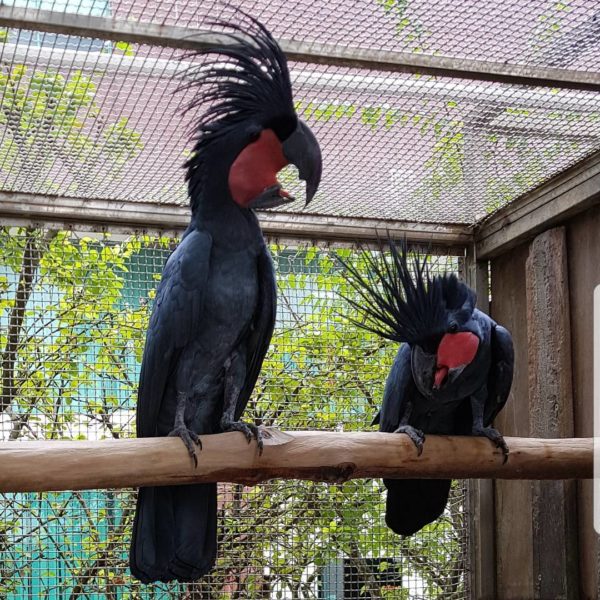
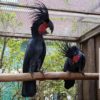
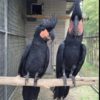
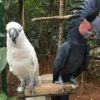
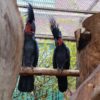
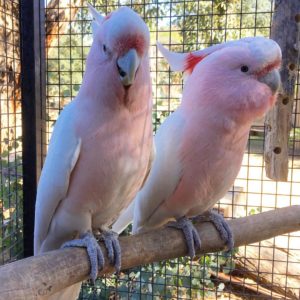
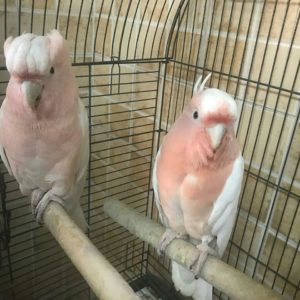
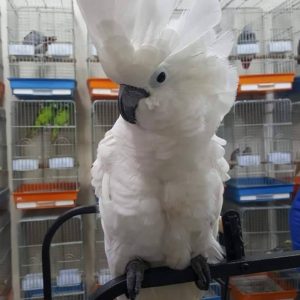
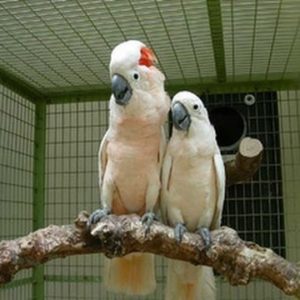
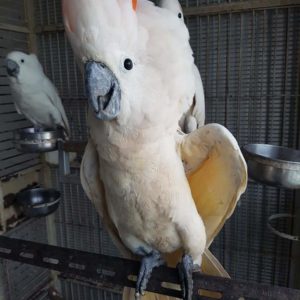
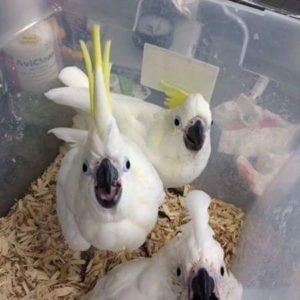
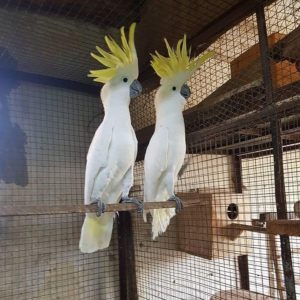
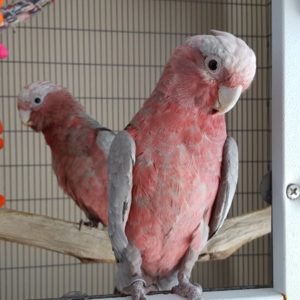

Reviews
There are no reviews yet. Add a review